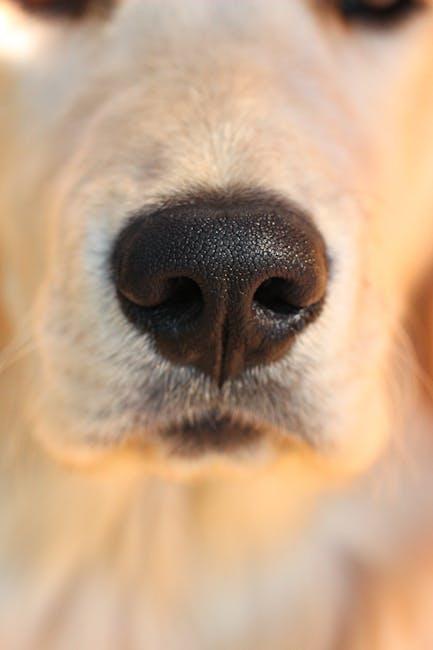Embarking on a long-distance run with your canine companion can be one of the most rewarding experiences for both you and your furry friend. Not only does it provide an excellent opportunity for physical exercise, but it also strengthens the bond between you and your dog, creating a partnership built on trust, endurance, and mutual enjoyment of the great outdoors. However, just like any training journey, preparing your dog for long-distance running requires patience, understanding, and the right approach. In this guide, we’ll walk you through the essential steps to ensure that your dog is not only ready for the challenge but also safe and happy every step of the way. Whether you’re an experienced runner looking to share your passion with your pet or a newcomer eager to explore new horizons together, this article will equip you with the knowledge and tips needed to turn your dog into the perfect running partner.
Building a Strong Foundation Start with Basic Obedience Training
Before embarking on long-distance adventures with your furry friend, it’s crucial to establish a robust foundation of basic obedience. This not only ensures safety but also enhances the overall running experience for both you and your dog. Begin by focusing on essential commands such as sit, stay, and come. These commands will help you manage your dog effectively during runs, especially when encountering distractions or unexpected situations.
Incorporate these training sessions into your daily routine, using positive reinforcement techniques like treats and praise. Here are some tips to get started:
- Consistency is key: Practice commands regularly to reinforce learning.
- Keep sessions short: Dogs have short attention spans, so aim for multiple brief sessions rather than one long one.
- Use a calm and firm voice: Your tone should convey authority without intimidation.
- Gradually increase difficulty: Once your dog masters a command, introduce distractions or practice in different environments.
By prioritizing basic obedience, you’ll set the stage for a safe and enjoyable running journey with your canine companion.
Gradual Conditioning Techniques Increase Your Dogs Stamina Safely
Building your dog’s endurance for long-distance running requires a methodical approach to ensure their health and enjoyment. Begin with short, manageable runs, gradually increasing the distance over time. This not only allows your dog’s muscles and joints to adapt but also helps their cardiovascular system build resilience. Consistency is key, so establish a regular running schedule that fits comfortably into both your lives.
- Start with a warm-up to loosen up muscles, perhaps a brisk walk or light jog.
- Introduce interval training by alternating between running and walking to boost stamina without overexertion.
- Monitor your dog’s hydration levels closely, especially on warmer days, and provide water breaks as needed.
- Pay attention to weather conditions; avoid running during peak heat to prevent overheating.
- Incorporate rest days into your schedule to allow for recovery and prevent injury.
Progress at a pace that suits your dog’s unique capabilities and always watch for signs of fatigue or discomfort. By patiently and attentively conditioning your dog, you’ll nurture a happy and healthy running partner ready to conquer those long trails with you.
Choosing the Right Gear Ensure Comfort and Safety for Your Canine Runner
Embarking on a running journey with your furry friend requires careful consideration of the gear that will ensure both comfort and safety. First and foremost, selecting a well-fitted harness is crucial. A harness provides better control and minimizes strain on your dog’s neck, especially during long-distance runs. Look for a harness with adjustable straps and breathable materials to keep your canine comfortable.
In addition to a harness, consider investing in a hands-free leash. This type of leash attaches to your waist, allowing for a more natural running motion and reducing the risk of tripping. It’s also essential to pay attention to your dog’s paws; running on various terrains can be tough on them. Opt for dog booties or paw balm to protect against rough surfaces and extreme temperatures. Don’t forget to carry a collapsible water bowl and plenty of water to keep your four-legged companion hydrated during your adventures.
Nutrition and Hydration Keep Your Dog Energized and Healthy
Ensuring your dog receives the right balance of nutrients and stays hydrated is crucial for their endurance and overall well-being during long-distance runs. Proper nutrition acts as the fuel that powers your furry friend’s muscles, helping them sustain energy and recover efficiently after exertion. A diet rich in high-quality proteins and healthy fats is essential, as these nutrients support muscle development and provide long-lasting energy. Include foods that are high in omega-3 fatty acids, which aid in reducing inflammation and support joint health, keeping your dog comfortable and agile.
Hydration is equally important, especially during intense exercise. Dogs can become dehydrated quickly, which can lead to fatigue and overheating. Ensure your dog has access to fresh water before, during, and after their runs. Consider carrying a portable water bottle and collapsible bowl to provide them with frequent sips during your training sessions. Additionally, you can offer water-rich foods like cucumbers or watermelon as treats, which can help keep them hydrated. Remember, a well-hydrated dog is a happy and healthy runner!
- Include high-quality proteins and healthy fats in their diet.
- Provide foods rich in omega-3 fatty acids for joint health.
- Ensure access to fresh water before, during, and after exercise.
- Offer water-rich foods as treats to aid hydration.

